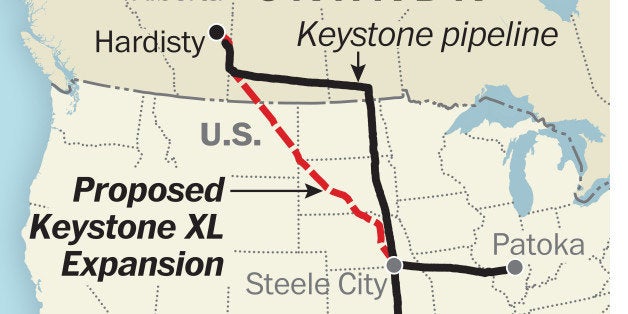
The Department of Interior has expressed concerns that the State Department is ignoring the potential impact the proposed Keystone XL pipeline could have on wildlife, waterways and national parks.
Willie Taylor, director of the Interior's Office of Environmental Policy and Compliance, sent the State Department a letter listing a number of issues with its new draft environmental impact analysis of the pipeline, which TransCanada would like to build from the oil sands in Alberta, Canada, to refineries in Texas. The March 2013 analysis came after President Barack Obama delayed a decision on the pipeline in November 2011 and asked the State Department to produce a "supplemental environmental impact statement," or SEIS.
Taylor sent the letter in April but the State Department declined to release it until last week. It notes that although the SEIS claims that Keystone "will not affect any national parks," at least seven national park units, five trails that are part of the National Trails System, and one part of the National Wildlife Refuge System could be in or near the pipeline's path.
The pipeline would also cross near the Niobrara National Scenic River in Nebraska and the Missouri National Recreational River, potentially affecting habitats for birds like the least tern and the piping plover, and fish like the pallid sturgeon, an endangered species.
A historic landmark — the Hagen National Site in Montana — could be impacted by the project as well. But whether it ultimately will be is unclear, the letter says, because the State Department's review "does not provide specific enough information to determine the location of the proposed pipeline" in that area.
Taylor pointed out that the SEIS ignores concerns Interior raised in response to a previous version of the analysis about avoiding wetlands and implementing a stronger plan to reduce impact on local vegetation.
At one point, the analysis claims that the "majority of the potential effects to wildlife resources are indirect, short term or negligible" and would only be sustained during the construction phase of the pipeline. But Interior concludes that statement is "inaccurate and should be revised" because impacts to wildlife will occur "throughout the life of the project," since it also involves the construction of access roads and power lines that will have an ongoing impact on wildlife.
Craig Johnson, a retired biologist who worked at the Fish and Wildlife Service for 15 years, said the letter from Interior is a fairly standard response to this kind of analysis. But it does lay out the areas that are likely to be the top concern for the department should the Keystone XL pipeline get to the stage where it is seeking operating permits. "Most of these are placeholders for more detailed and often fairly intense fights during permitting," said Johnson. "This is the posturing before the fight."
"We look forward to continuing to work with the Department of Interior on the issues described in its letter," a State Department official told the Los Angeles Times. "The Department of State continues to review the presidential permit application for the proposed Keystone XL pipeline in a rigorous, transparent and efficient manner."
The Environmental Protection Agency has also complained that the SEIS provided “insufficient information” about potential environmental issues related to the pipeline, and said the State Department did not consider alternative routes that might pose fewer risks.
"Both EPA and Interior are really saying that there are substantial problems with this pipeline and the State Department doesn’t quite seem ready to come to grips with these problems and give it the type of review it needs," said Jim Murphy, the wetlands and water resources counsel at the National Wildlife Federation. "It’s surprising that the State Department is not listening, given how much scrutiny this project is getting. This is not an under-the-radar project."
Environmental groups have previously raised concerns that the environmental consulting firm hired to produce the SEIS, Environmental Resources Management, had previously done work for TransCanada. That information was not properly disclosed and had been hidden in documents when they were released publicly.
Environmental groups hope the comments from the EPA and the Department of the Interior will help strengthen the final version of the environmental impact statement, which is expected to be released later this year. "I would expect that under [Secretary of State John] Kerry, the State Department would reflect these comments and put it in their final statement," said Michael Brune, executive director of the Sierra Club. "It's pretty clear that DOI has much more expertise on impacts of a pipeline on wildlife than State."

